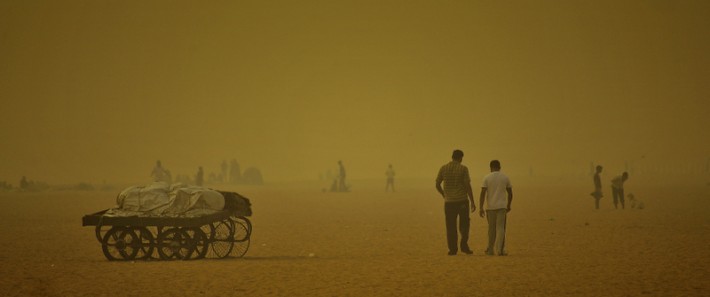Planning to travel this summer? If you value your health, you may want to think twice about adding the following cities to your itinerary. While these places may not necessarily carry the bizarre and deadly tropical diseases that fascinate medical drama fans, they definitely have some of the most poisonous air in the world.
Possible Risks
A short-term visit to any of these cities might not lead to a case of emphysema down the line, but breathing in the brown haze that blankets these places can still cause health problems such as nausea, dizziness, chest pain and respiratory infection. These effects worsen from physical exertion, which is why some of the athletes who visited smog-choked Beijing during the 2008 summer Olympics practiced additional respiratory care by covering their mouths and noses with masks.
What You Can Do
Fortunately, NASA, the World Health Organization, and Yale University have been busy monitoring air pollution levels throughout the world and now offer handy online resources for travelers interested in finding a lung-friendly location. NASA, for instance, provides a satellite-based map designed by Canadian researchers to measure airborne particle density, which has become immensely important for recording pollution levels in the developing world. A quick glance at this map reveals a frightening amount of red staining nearly all of Asia, the Middle East and roughly half of Africa, which means that cities in these zones will likely contain pollution levels many times higher than the amounts deemed safe enough to breathe. Indeed, the following cities, which hold the dubious honor of being the ten most polluted in the world, all come from these areas: While none of these places register as popular tourist destinations, keep in mind that they only represent the worst examples. For instance, Ulaan Baatar’s annual mean particulate level of 279 mcg. may dwarf Hong Kong’s modest level of 50 mcg. on the WHO list, but Hong Kong is still twice as polluted as Los Angeles, the smoggiest major city in the United States. You might also want to reconsider visiting the great pyramids of Egypt, since Cairo’s air quality is five times worse than L.A. and probably about as healthy as smoking pack of cigarettes each day. What Are The Alternatives? What safe travel destinations, if any, remain for those who need to protect their lungs? As you may have already guessed, Canada has some of the cleanest air in the world. Even major cities such as Toronto possess surprisingly low levels of airborne particulates, making the “Great White North” one of the best places to live if you have serious respiratory problems. Smog Doesn’t Have to be Forever While pollution streaming from the developing world remains a serious threat to the environment, hope remains for even the most noxious cities. Twenty years ago, for example, Mexico City was condemned by the United Nations for being the most polluted city in the world, with air quality so poor that birds would drop dead. Today, however, this enormous metropolis has managed to cut toxic emissions in half due to cleaner fuels and better public transportation. Unfortunately, Mexico City’s turnaround provides little comfort if you are thinking about taking a trip this summer to see the Taj Mahal in Agra, India (165 mcg.) or want to walk down the Great Wall of China from Beijing (121 mcg.), but it does offer the possibility of someday coming home from these destinations without hacking up a lung. For now, however, these cities are best avoided by those who need respiratory care due to chronic breathing conditions. -Subscribe to get free updates via RSS or email, follow us on Twitter or find us on Facebook-
1. Ahvaz, Iran
2. Ulaan Baatar, Mongolia
3. Sanandaj, Iran
4. Ludhiana, India/Quetta, Pakistan (tie)
5. Kermanshah, Iran
6. Peshawar, Pakistan
7. Gaborone, Botswana
8. Yasouj, Iran
9. Kanpur, India
10. Lahore, Pakistan











Nice, a travel guide of places NOT to go.
Shanghai was so smoggy the city was like it was dying.